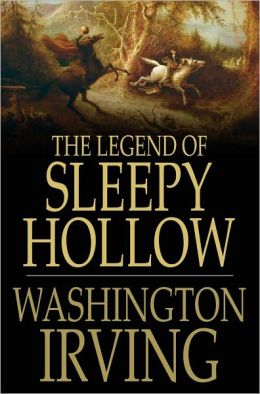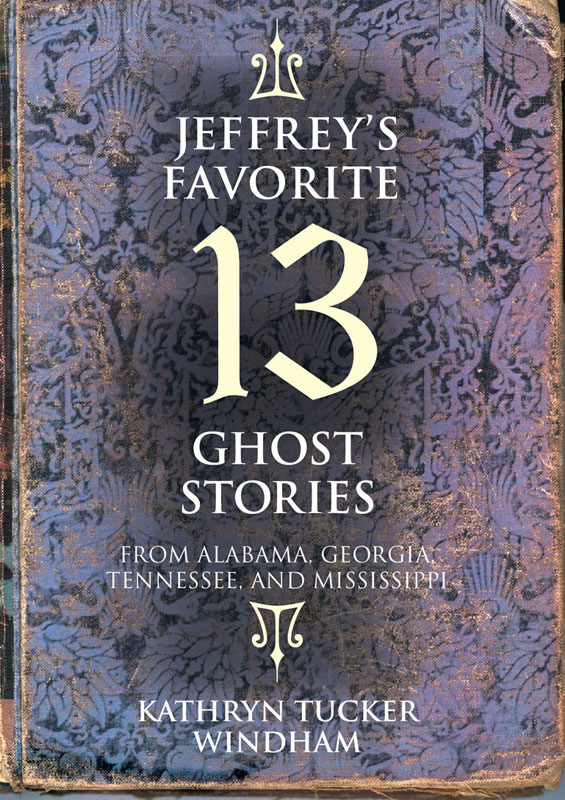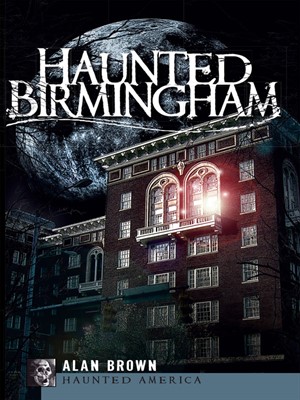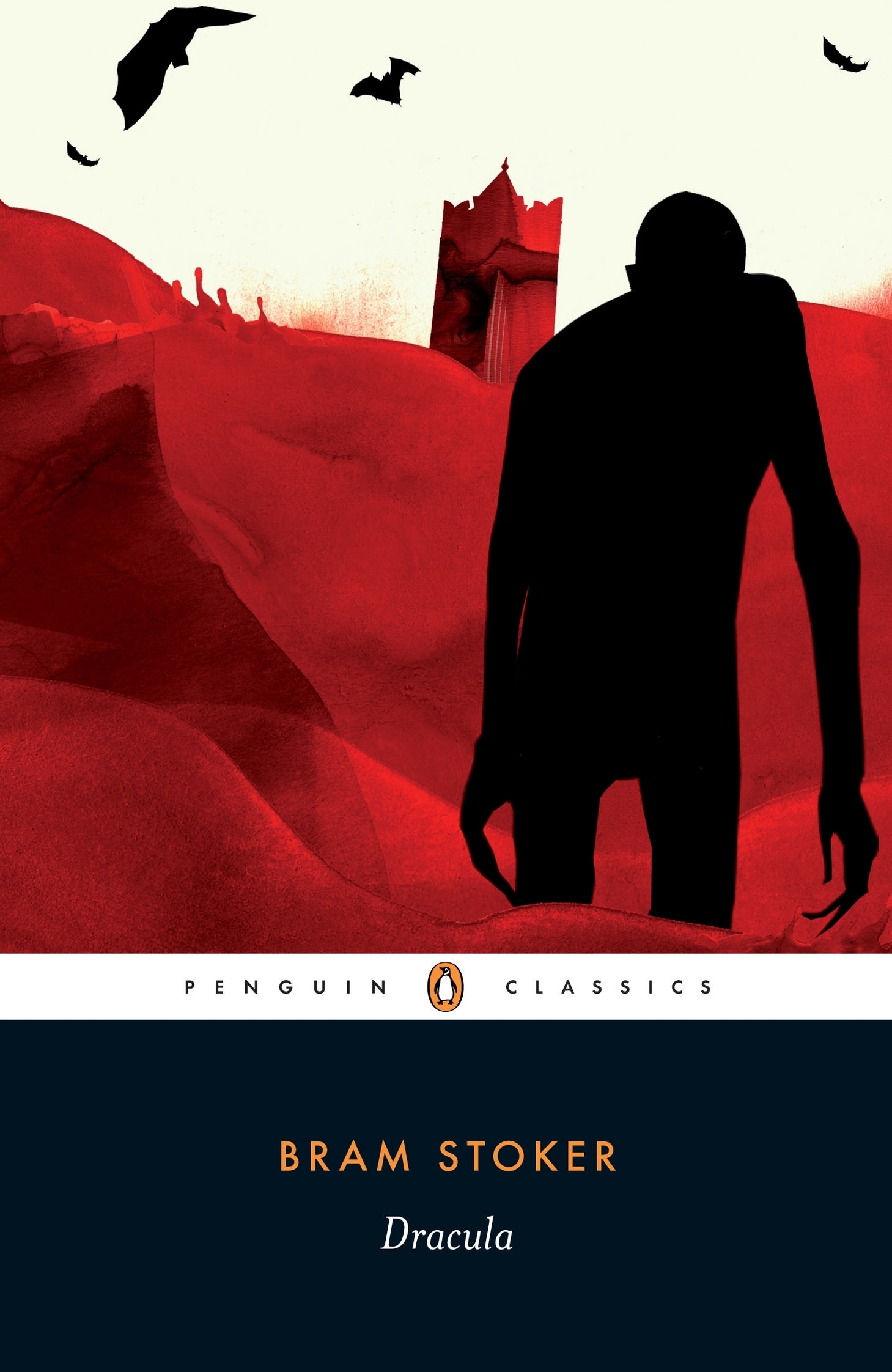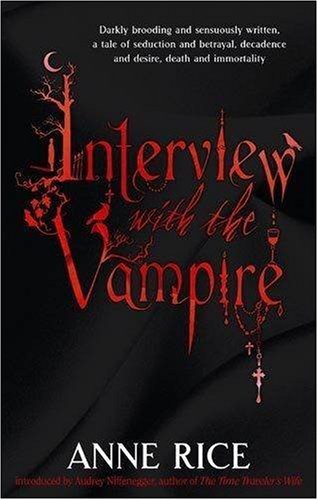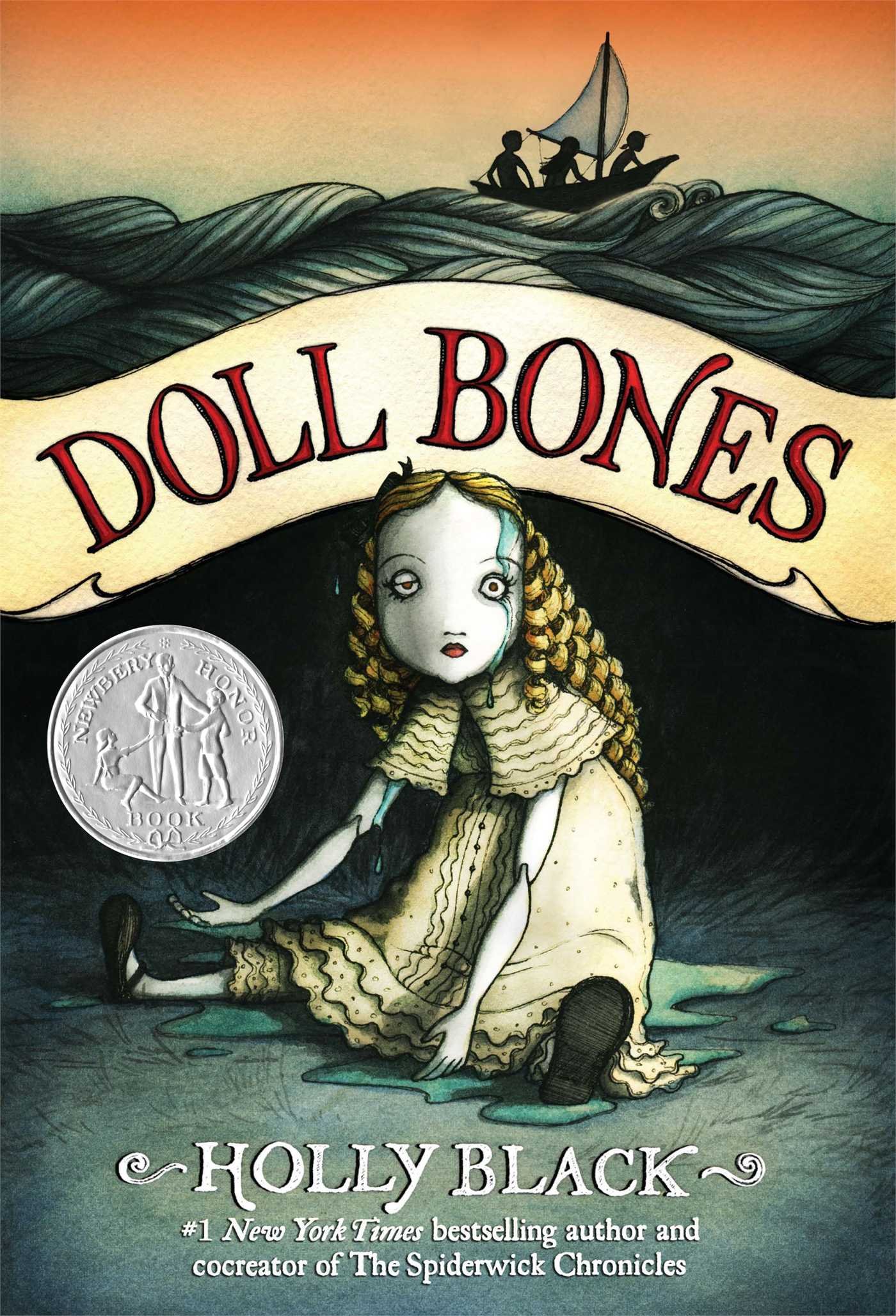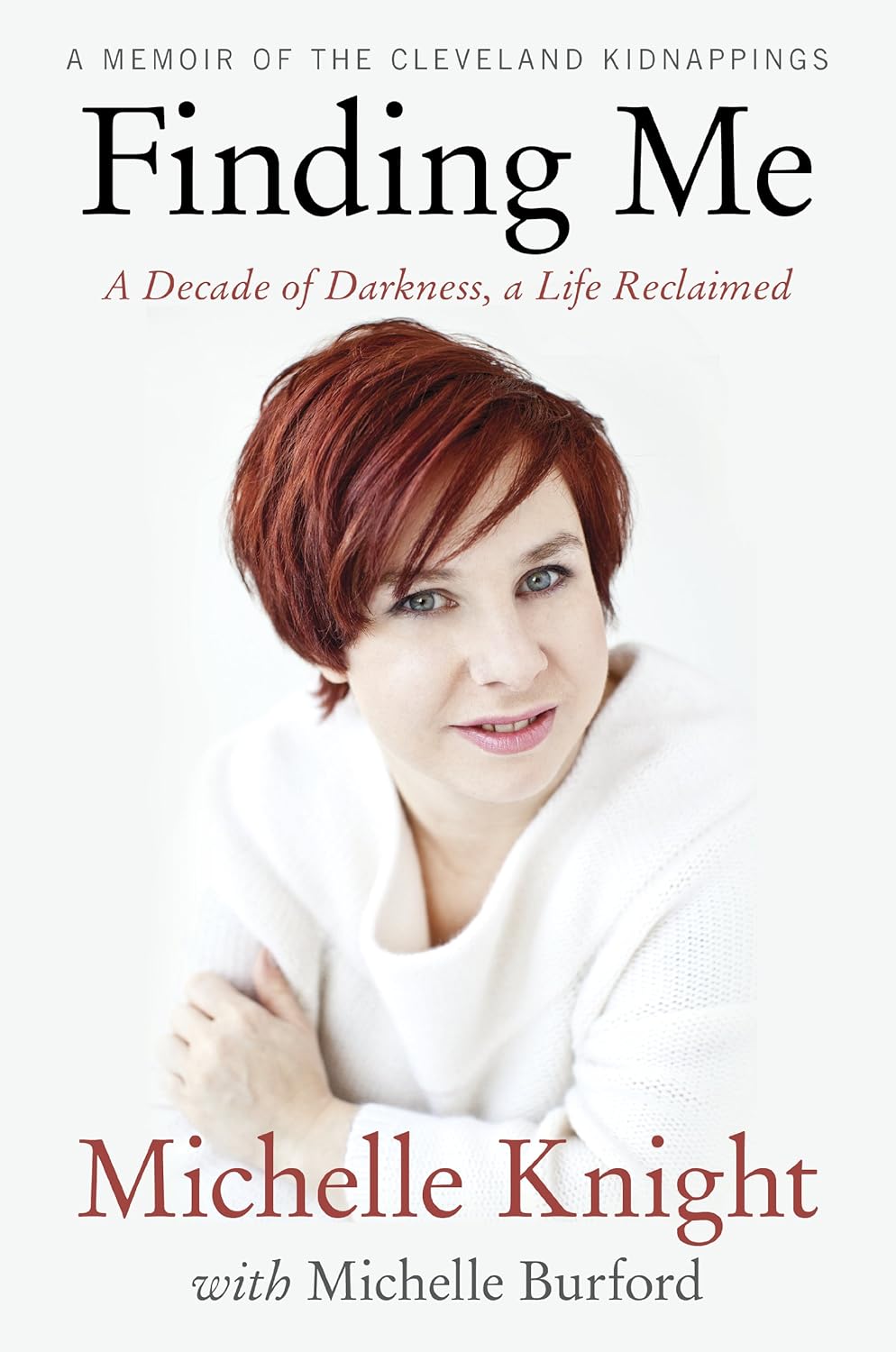Last week, we met to discuss Native and early Americans and here is the list of items we shared!
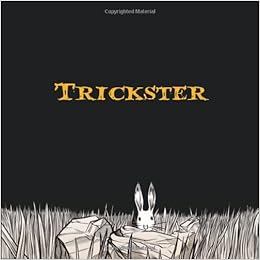
Trickster: Native American Tales, A Graphic Collection edited by Matt Bembicki
(Powells.com) All cultures have tales of the trickster — a crafty creature or being who uses cunning to get food, steal precious possessions, or simply cause mischief. He disrupts the order of things, often humiliating others and sometimes himself. In Native American traditions, the trickster takes many forms, from coyote or rabbit to raccoon or raven. The first graphic anthology of Native American trickster tales, Trickster brings together Native American folklore and the world of comics.
In Trickster, more than twenty Native American tales are cleverly adapted into comic form. Each story is written by a different Native American storyteller who worked closely with a selected illustrator, a combination that gives each tale a unique and powerful voice and look. Ranging from serious and dramatic to funny and sometimes downright fiendish, these tales bring tricksters back into popular culture in a very vivid form. From an ego-driven social misstep in "Coyote and the Pebbles" to the hi-jinks of "How Wildcat Caught a Turkey" and the hilarity of "Rabbit's Choctaw Tail Tale," Trickster provides entertainment for readers of all ages and backgrounds.

Caleb's Crossing by Geraldine Brooks
(Powells.com) A New York Times bestselling tale of passion and belief, magic and adventure from the Pulitzer Prize–winning author. Bethia Mayfield is a restless and curious young woman growing up in Martha's vineyard in the 1660s amid a small band of pioneering English Puritans. At age twelve, she meets Caleb, the young son of a chieftain, and the two forge a secret bond that draws each into the alien world of the other. Bethia's father is a Calvinist minister who seeks to convert the native Wampanoag, and Caleb becomes a prize in the contest between old ways and new, eventually becoming the first Native American graduate of Harvard College. Inspired by a true story and narrated by the irresistible Bethia, Caleb’s Crossing brilliantly captures the triumphs and turmoil of two brave, openhearted spirits who risk everything in a search for knowledge at a time of superstition and ignorance.

GENERAL DISCUSSION: NPR Diane Rehm interview with Ms. Brooks in 2011

Smoke Signals (DVD)
(Rottentomatoes.com) The unavoidable synopsis -- two young American Indians leave the reservation to resolve their problems and to find themselves -- belies the poetry of this well-acted, well-directed and largehearted movie. Adapted from Sherman Alexie's short story collection The Lone Ranger and Tonto Fistfight in Heaven.

The Lone Ranger and Tonto Fistfight in Heaven by Sherman Alexie
(Powells.com) In this darkly comic short story collection, Sherman Alexie, a Spokane/Coeur d'Alene Indian, brilliantly weaves memory, fantasy, and stark realism to paint a complex, grimly ironic portrait of life in and around the Spokane Indian Reservation. These twenty-two interlinked tales are narrated by characters raised on humiliation and government-issue cheese, and yet are filled with passion and affection, myth and dream.
There is Victor, who as a nine-year-old crawled between his unconscious parents hoping that the alcohol seeping through their skins might help him sleep, Thomas Builds-the-Fire, who tells his stories long after people stop listening, and Jimmy Many Horses, dying of cancer, who writes letters on stationary that reads "From the Death Bed of Jimmy Many Horses III," even though he actually writes then on his kitchen table. Against a backdrop of alcohol, car accidents, laughter, and basketball, Alexie depicts the distances between Indians and whites, reservation Indians and urban Indians, men and women, and mostly poetically between modern Indians and the traditions of the past.

If I Ever Get Out of Here by Eric Gansworth
(Powells.com) Lewis "Shoe" Blake is used to the joys and difficulties of life on the Tuscarora Indian reservation in 1975: the joking, the Fireball games, the snow blowing through his roof. What he's not used to is white people being nice to him — people like George Haddonfield, whose family recently moved to town with the Air Force. As the boys connect through their mutual passion for music, especially the Beatles, Lewis has to lie more and more to hide the reality of his family's poverty from George. He also has to deal with the vicious Evan Reininger, who makes Lewis the special target of his wrath. But when everyone else is on Evan's side, how can he be defeated? And if George finds out the truth about Lewis's home — will he still be his friend? Acclaimed adult author Eric Gansworth makes his YA debut with this wry and powerful novel about friendship, memory, and the joy of rock 'n' roll.
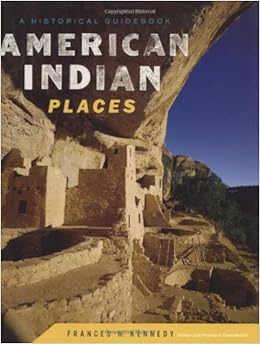
American Indian Places: A Historical Guidebook by Frances H. Kennedy
(Powells.com) This historical guidebook includes 366 places that are significant to American Indians and open to the public. The book is organized geographically and includes location information, maps, and color photographs as well as suggestions for further reading about the sites and an extensive bibliography.
Among the 279 authorities who know and revere these places and have written essays on them and on topics relating to them are William deBuys, Suzan Shone Harjo, Frederick E. Hoxie, Clara Sue Kidwell, Malinda Maynor Lowery, Rennard Strickland, and David Hurst Thomas. Tribal culture committees and tribal historians also contributed essays. Frances H. Kennedy, the editor and principal contributor, has written short entries on more than a hundred of the places.
The places covered in the book include: Ganondagan State Historic Site in New York, Kituwah Mound in North Carolina, Cahokia Mounds State Historic Site in Illinois, Crystal River Archaeological State Park in Florida, Effigy Mounds National Monument in Iowa, Devils Tower National Monument in Wyoming, Chaco Culture National Historical Park in New Mexico, Navajo National Monument in Arizona, Olompali State Historic Park in California, La Purisima Mission State Historic Park in California, Nez Perce National Historical Park in Idaho, and many more.

Last of the Breed by Louis L'Amour
(Powells.com) Here is the kind of authentically detailed epic novel that has become Louis L’Amour’s hallmark. It is the compelling story of U.S. Air Force Major Joe Mack, a man born out of time. When his experimental aircraft is forced down in Russia and he escapes a Soviet prison camp, he must call upon the ancient skills of his Indian forebears to survive the vast Siberian wilderness. Only one route lies open to Mack: the path of his ancestors, overland to the Bering Strait and across the sea to America. But in pursuit is a legendary tracker, the Yakut native Alekhin, who knows every square foot of the icy frontier—and who knows that to trap his quarry he must think like a Sioux.
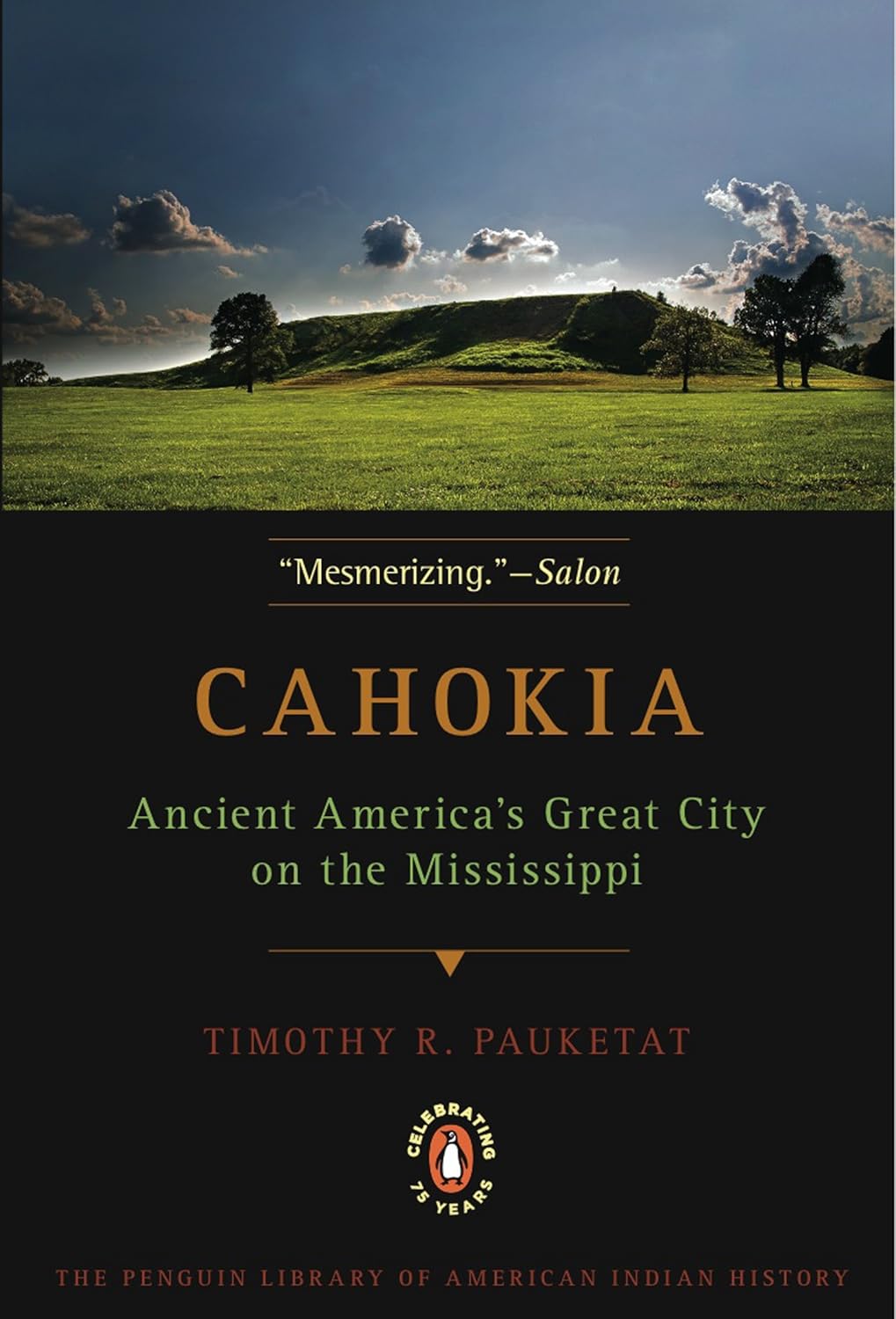
Cahokia: Ancient America's Great City on the Mississippi by Timothy Pauketat
(Powells.com) While Mayan and Aztec civilizations are widely known and documented, relatively few people are familiar with the largest prehistoric Native American city north of Mexico-a site that expert Timothy Pauketat brings vividly to life in this groundbreaking book. Almost a thousand years ago, a city flourished along the Mississippi River near what is now St. Louis. Built around a sprawling central plaza and known as Cahokia, the site has drawn the attention of generations of archaeologists, whose work produced evidence of complex celestial timepieces, feasts big enough to feed thousands, and disturbing signs of human sacrifice. Drawing on these fascinating finds, Cahokia presents a lively and astonishing narrative of prehistoric America.

The Pueblo Indians: Farmers of the Rio Grande by Sonia Bleeker
(Jacketflap.com) Published in 1955, Bleeker's book tells the story of Young Hawk. He lived over 400 years ago, but the civilization of the Pueblo Indians, already well advanced before any white settlers came into their land, has changed very little since his day.
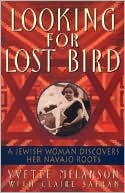
Looking for Lost Bird: A Jewish Woman's Discovery of Her Navajo Roots by Yvette Melanson
(Powells.com) Adopted on the black market, Yvette went to live with an affluent older couple in New York. They filled her days with piano lessons, ballet and art classes, and wished her sweet dreams in a canopy bed. But then love faltered, replaced by grief and rejection. Striking out on her own, Yvette went to Israel and sought comfort among Kibbutz friends and army comrades, then returned to the states, no closer to finding peace with herself. With deep yearning and wry humor, Yvette tells of finally finding her reality--a truth that she could never have conjured for herself.
Moving to a hidden corner of the Navajo reservation, she is met by strangers who say they are her family. In the mystery of their ceremonies and in the daily rhythms of reservation life, she learns about Navajo spirituality, about medicine men and Changing Woman, about winds that whisper and ghosts that walk.
This is the story of a woman yearning to fit into an unknown heritage. Even as she learns to weave Navajo rugs, she looks for ways to intertwine her Jewish faith and the Navajo one to lace the Biblical story of Adam and Even with the Navajo tales of the corn people. Exploring the secrets of identity and the meaning of family, she measures the ties of upbringing against the tug of blood. What she finds is faith, in all its forms, and love, in all its faces. Adapted as a TV movie for Hallmark in 2000.

The Education of Little Tree by Forrest Asa Carter
(Powells.com) The Education of Little Tree tells of a boy orphaned very young, who is adopted by his Cherokee grandmother and half-Cherokee grandfather in the Appalachian mountains of Tennessee during the Great Depression.
GENERAL DISCUSSION: From npr.org...In the early 1990s, The Education of Little Tree became a publishing phenomenon. It told the story of an orphan growing up and learning the wisdom of his Native American ancestors, Cherokee Texan author Forrest Carter's purported autobiography.
The book was originally published in 1976 to little fanfare and modest sales, but in the late 1980s, the University of New Mexico Press reissued it in paperback — and it exploded. By 1991, it reached the top of The New York Times nonfiction best-seller list. It was sold around the world, praised by Oprah Winfrey and made into a Hollywood film. The Education of Little Tree would go on to sell more than 1 million copies. But the book and its author were not what they seemed. Listen to the All Things Considered NPR segment here.

If the Legends Fade by Tom Hendrix
(Amazon.com) "All things shall pass. Only the stones will remain." ....In northwest Alabama, there is a stone wall dedicated to my great-great-grandmother's journey about which this book is written, and to all Native American women. The wall is my way of honoring my ancestors. It has become a special place to many who visit it, for reasons that relate to their own lives. After walking the length of the wall, Charlie Two Moons, a spiritual person, explained it this way: "The wall does not belong to you, Brother Tom, It belongs to all people. You are just the keeper. I will tell you that it is "wichahpi, "which means "like the stars". when they come, some will ask, "Why does it bend and why is it higher and wider in some places than in others?" Tell them it is like your great-great-grandmother's journey, and their journey through life--it is never straight." If the Legends Fade is the story of Te-lah-nay's journey. the story, like the wall, belongs to all people.
Brother Eagle, Sister Sky: A Message from Chief Seattle by Susan Jeffers
(Powells.com) The Earth does not belong to us. We belong to the Earth. The great American Indian Chief Seattle spoke these words over a hundred years ago. His remarkably relevant message of respect for the Earth and every creature on it has endured the test of time and is imbued with passion born of love of the land and the environment. Illustrated by award-winning artist Susan Jeffers, the stirring pen-and-color drawings bring a wide array of Native Americans to life while capturing the splendor of nature and the land. Children and parents alike will enjoy the timeless, poignant message presented in this beautifully illustrated picture book. "Together, Seattle's words and Jeffers's images create a powerful message; this thoughtful book deserves to be pondered and cherished by all." (Publishers Weekly )

Sherman Alexie's poem, "Sister Fire, Brother Smoke" from The Summer of Black Widows
Have I become an accomplished liar,
a man who believes in his own inventions?
When I see my sister in every fire,
is it me who sets her in those pyres
and burns her repeatedly? Should I mention
I may have become an accomplished liar,
a man who was absent when his sister died,
but still feeds those flames in the present tense?
When I see my sister in every fire,
am I seeing the shadow that survived her
conflagration? Because of my obsession
I have become an accomplished liar,
who strikes a match, then creates a choir
of burning matches, with the intention
of seeing my sister in every fire?
Is she the whisper of ash floating high
above me? I offer these charred questions.
Have I become an accomplished liar
if I see my sister in every fire?
"Song for America" by Kansas
"Wildfire" by Michael Martin Murphey and Larry Cansler
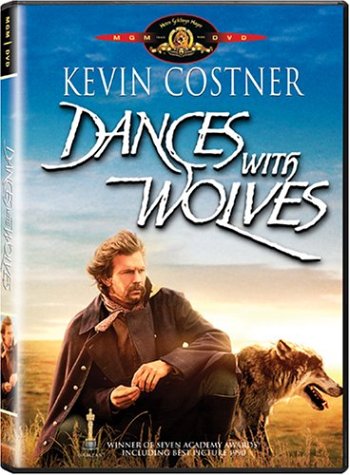
Dances with Wolves (DVD)
(Rottentomatoes.com) A historical drama about the relationship between a Civil War soldier and a band of Sioux Indians, Kevin Costner's directorial debut was also a surprisingly popular hit, considering its length, period setting, and often somber tone. The film opens on a particularly dark note, as melancholy Union lieutenant John W. Dunbar attempts to kill himself on a suicide mission, but instead becomes an unintentional hero. His actions lead to his reassignment to a remote post in remote South Dakota, where he encounters the Sioux. Attracted by the natural simplicity of their lifestyle, he chooses to leave his former life behind to join them, taking on the name Dances with Wolves. Soon, Dances with Wolves has become a welcome member of the tribe and fallen in love with a white woman who has been raised amongst the tribe. His peaceful existence is threatened, however, when Union soldiers arrive with designs on the Sioux land. Some detractors have criticized the film's depiction of the tribes as simplistic; such objections did not dissuade audiences or the Hollywood establishment, however, which awarded the film seven Academy Awards, including Best Picture. ~ Judd Blaise, Rovi Based on Michael Blake's novel of the same name.
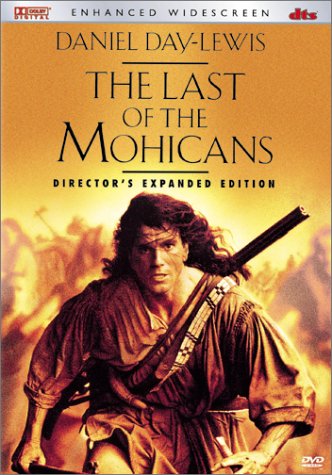
Last of the Mohicans (DVD)
(Rottentomatoes.com) Director Michael Mann based this lushly romantic version of the James Fenimore Cooper novel more on his memory of the 1936 film version (starring Randolph Scott) than on Cooper's novel (in fact, Philip Dunne's 1936 screenplay is cited as source material for this film). Set in the 1750s during the French and Indian War, the story concerns Hawkeye (Daniel Day-Lewis), the European-born adopted son of Mohican scout Chingachgook (Russell Means). Hawkeye and his party, which also includes the Mohican Uncas (Eric Schweig), joins up with a group of Britons who have recently arrived in the Colonies. The group consists of Cora Munro (Madeleine Stowe) and her younger sister, Alice (Jodhi May), who are rescued from a Huron war party by Hawkeye. Hawkeye's band accompanies them to the British Fort William Henry, which is being besieged by a French and Huron force. The fort falls to the French, and Colonel Munro (Maurice Roeves) surrenders to French General Montcalm (Patrice Chéreau). The terms of the surrender are that the British merely abandon the fort and return to their homes. However, the French's bloodthirsty ally, the Huron warrior Magua (Wes Studi), has made no such agreement, and, as the British retreat from the fort, he plans to massacre them in a terrible Huron attack. ~ Paul Brenner, Rovi
Little Big Man (DVD)
(Rottentomatoes.com) Many historical events of the Old West are recalled a century later by the 121-year-old Jack Crabb (Dustin Hoffman) in this classic western drama comedy. When he is ten, Jack and his sister are the only survivors of a Cheyenne Indian attack that kills their parents. Dubbed "Little Big Man," he becomes a member of the tribe for six years before being taken in by the Reverend Pendrake (Thayer David) and his lusty, unfaithful wife (Faye Dunaway). Jack later joins up with a snake oil salesman (Martin Balsam), who becomes the victim of wrath of his unfortunate clients. After witnessing the murder of Wild Bill Hickock, Jack abandons his goal to become a famous gunfighter. He becomes a guide for George Armstrong Custer (Richard Mulligan), and witnesses the massacre at Litttle Big Horn with his adopted Indian father (Chief Dan George). Jack is saved by an Indian brave who owed his life to him, but the native American is plagued by a harridan wife. The plus sized Swedish woman had been married to Jack before she was captured and quickly dominates the life of the unfortunate Younger Bear (Cal Bellini). Robert Little Star provides comic relief as a effeminate Cheyenne. Chief Dan George won an Academy Award for Best Supporting Actor. Crabb recalls his past life from a nursing home to a wide eyed reporter. Dick Smith and Terry Miles showed exceptional expertise in make up for all the characters, particularly to make Hoffman look like a 121 year old man. Although historical accuracy of many event depicted is stretched if not shattered into revisionism, Little Big Man has endured to become a classic and depicted native Americans as human beings.


